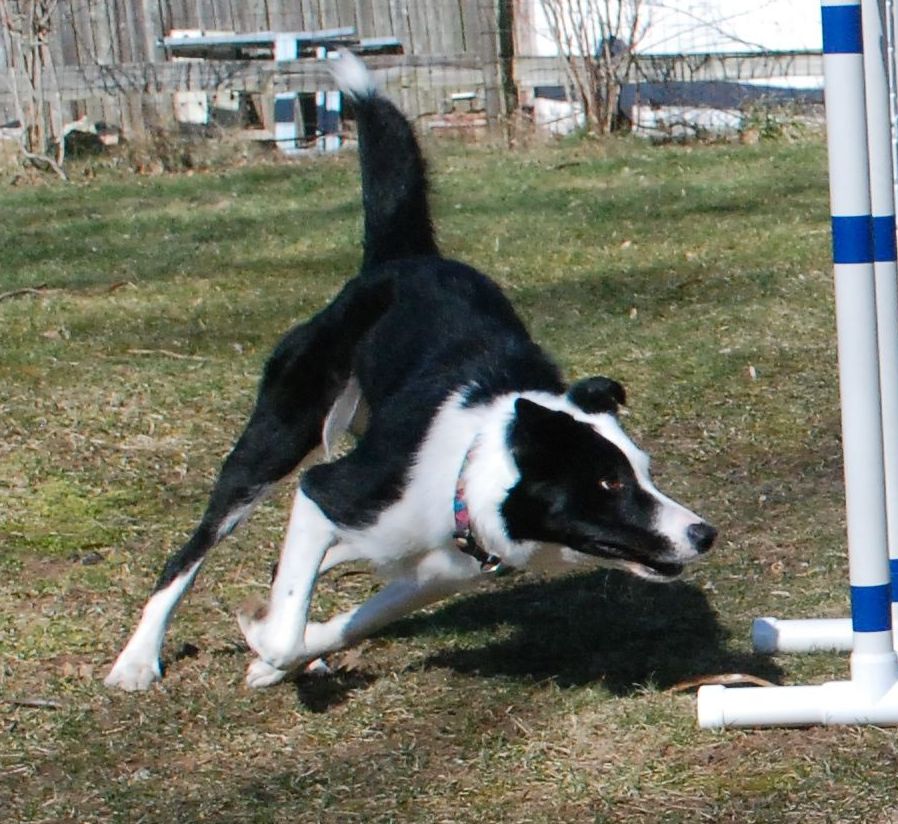The Information Zone
A day or two after a weekend trial and once I’ve gained a little perspective, I like to review my videos and extract the “learning” from the weekend. This past weekend’s review has me thinking about time and space. As handlers and competitors we think a lot about time. We want the cleanest lines on course, the most efficient jumping, and the speediest contacts and weaves to get the fastest times from our dogs. If we lose a class by half a second, we might agonize over where we lost time on course – a wide turn, an extra stride, etc. We also think a lot about being “timely”. Like the three bears story, we want to give information to our dog — not too early, not to late, but at just the right time.
Embedded in that notion of being timely is both a “WHEN”, and a “WHERE”. I think of this as the “information zone” . The information zone is the space between the obstacles where the dog receives cues from his handler as to where he is going next. It has two components – a time and a place; a when and a where. For a cue to be “timely”, the dog has to receive (and understand) the information given by the handler while he’s in that physical space between obstacles so that he can prepare for what is next. In a jumping sequence it’s well before the dog takes off for the jump because once he is air-borne, physics takes over and there is little he can do to change where he lands.
The information zone is about the WHEN and WHERE for the DOG. The WHERE of the HANDLER matters to the extent that the handler’s position on course gives information to the dogs about where he is going next. But what matters much more is WHEN the dog gets the information relative to his WHERE. So, we can be ahead of our dogs, lateral from our dogs or behind our dogs as long as the dog is getting the information when he needs it.
One of the biggest challenges I’ve faced in learning to handle my powerful, long-strided boy, Tai, is appreciating how quickly the “information zone” can come and go. Where little Breeze will put in 2 strides, Tai will put in one stride. Where Breeze puts in an extended one stride, Tai put in a shortened stride or even a bounce.
Here is an analysis of a sequence from this past weekend. The video marks the “information zones” between obstacles and what handling cues are used to direct Tai through the sequence. I hope this helps get my point across and encourages you to look at your own video with these concepts in mind. Enjoy and happy training!


That was a great analysis Anne! Sure gives every handler something to think about when watching our own videos.Thanks!
Never more essential than with a big power house of a dog like Tai. It’s taking me a long time to master 2Do’s information zone. It’s great to work on stuff that you are working on, it’s not as lonely and I can learn from a pro!
Jodi…I miss you already and I just saw you a few weeks ago!
Enjoyed the analysis and always love watching Tai! I went and watched my run on that course in slow motion – first time I used that feature in my video tool. I have more time in my information zone but found that my biggest weakness this past weekend were my shoulder rotations – late or lack there of costing lost time in those areas. And these courses had lots of places requiring shoulder rotations!
Julie. Those courses challenged my timing in a lot of ways! Thinking about what is cueing the dog is fun! Doing it exactly at the right time is the challenge. It was surprising even to me to see how much information was being transmitted so quickly.
So much info to convey, so little time!!!
Anne…that was so amazing to watch. You gave me such great stuff to think about as I watch my videos from a Jenn Pinder seminar I attended this weekend. Will be looking at things a little closer as to WHERE and WHEN! Thanks!!!!!
Judy…I’m glad you found this helpful!
this was GREAT thank you so much!!!
Such a clear explanation for when to give information that is so necessary and crucial for letting our dogs know where to go. I will look at my videos in a different way now. No wonder I’m so challenged with Kip! Thank you Anne for sharing this!